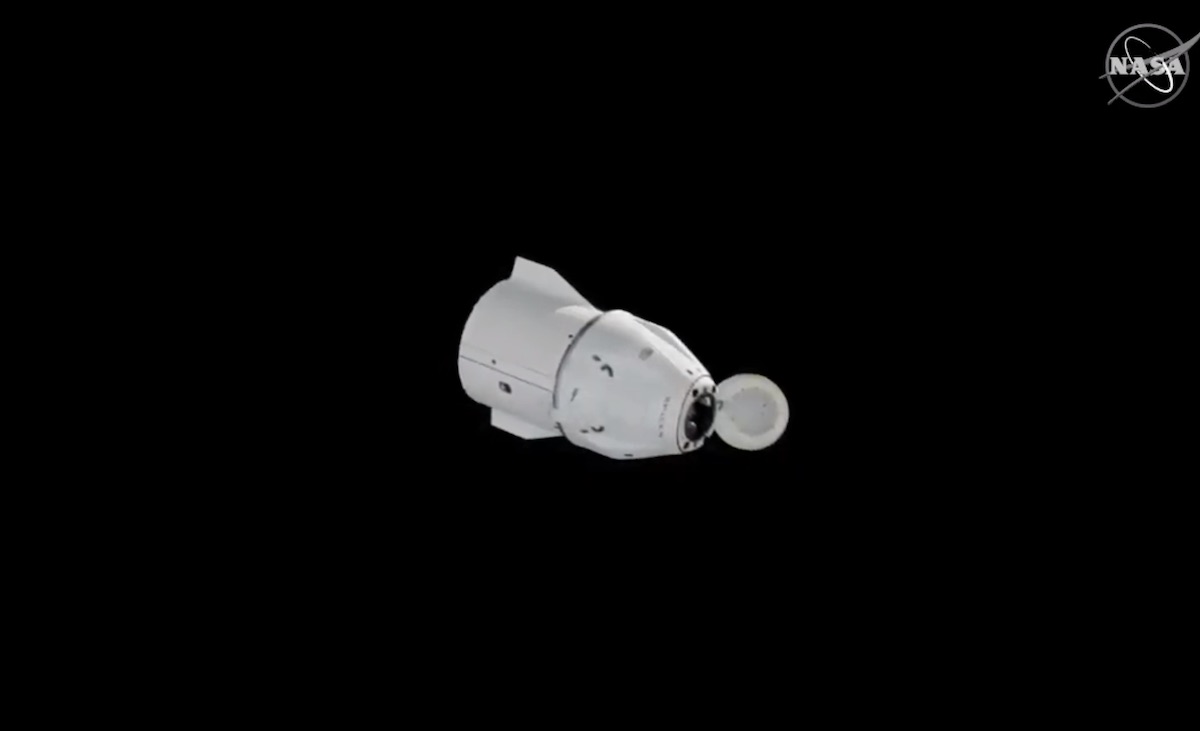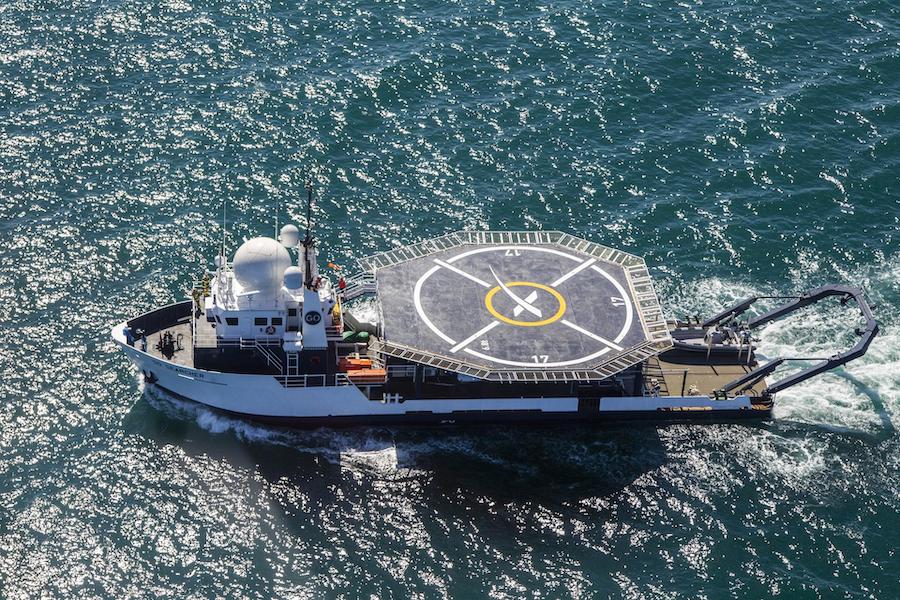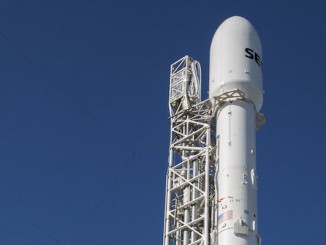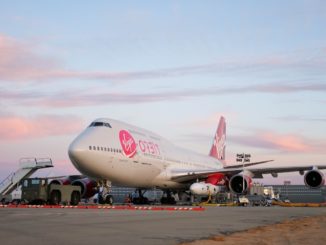
SpaceX’s first upgraded Cargo Dragon spaceship departed the International Space Station Tuesday morning with more than 4,400 pounds of research specimens and other equipment, heading for splashdown Wednesday night in the Gulf of Mexico off the west coast of Florida.
Poor weather in the recovery zone prevented the Cargo Dragon from undocking and returning to Earth Monday.
The undocking and splashdown mark the first return of a Cargo Dragon spacecraft near Florida, and it wraps up the first flight of SpaceX’s upgraded model of Dragon supply ships derived from the company’s human-rated Crew Dragon vehicle.
SpaceX recovery teams will be on standby for the parachute-assisted splashdown around 8:27 p.m. EST Wednesday (0227 GMT Thursday) in the Gulf of Mexico west of Tampa. The Dragon is returning to Earth with 4,414 pounds, or 2,002 kilograms, of cargo, according to a NASA spokesperson.
The “Go Navigator” recovery ship staffed by SpaceX technicians and engineers will hoist the capsule onboard its deck after splashdown. The SpaceX team will unload time-critical science specimens and put them on a helicopter for a flight to the Kennedy Space Center overnight.
The helicopter will arrive at Kennedy’s Launch and Landing Facility, and the cargo will be transported to the nearby Space Station Processing Facility by truck, according to NASA.
Scientists there will receive the specimens to begin their analyses. After a quick look inside the SSPF at Kennedy, some of the materials will be shipped to research teams in California, Texas, Massachusetts, Japan, and other locations, NASA said.
SpaceX’s first upgraded Cargo Dragon spaceship departed the International Space Station Tuesday morning with 4,400 pounds of research specimens and other equipment, heading for splashdown Wednesday night in the Gulf of Mexico off the west coast of Florida. https://t.co/s6P0MTyNr1 pic.twitter.com/Vp4nZCEFjz
— Spaceflight Now (@SpaceflightNow) January 12, 2021
The upgraded Cargo Dragons target splashdowns near the Florida coast, closer to research facilities at Kennedy and SpaceX’s Dragon refurbishment site at Cape Canaveral Space Force Station. Previous Dragon cargo flights ended with splashdowns in the Pacific Ocean off the coast of Baja California.
The return of science specimens to Kennedy so quickly after their return to space harkens back to the space shuttle program, when missions brought come cargo directly to the Florida spaceport.
“I am excited to finally see science returning here again because we can get these time sensitive experiments into the lab faster than ever,” said Jennifer Wahlberg, Kennedy Space Center utilization project manager, in a statement. “Sending science up to space and then receiving it again on the runway was definitely something in the shuttle days that we really took pride in, and being able to rejoin that process is great.”
Experiments coming home aboard the Cargo Dragon Monday include live mice that are part of the Rodent Research 23 investigation, which studies the function of arteries, veins, and lymphatic structures in the eye and changes in the retina before and after spaceflight, according to NASA.
Scientists are seeking insights about whether these changes affect eyesight. At least 40 percent of astronauts experience vision impairment on long-duration spaceflights, NASA says.
“Rodent Research-23 was designed to start studying rodent gravity readaptation responses as quickly as possible, making it an ideal candidate for this flight,” said Jennifer Buchli, deputy chief scientist for the International Space Station program at NASA’s Johnson Space Center in Houston.

There is also a biomedical experiment led by researchers at Stanford University looking at how microgravity affects cardiovascular cells, and an experiment developed by Japanese scientists demonstrating the growth of 3D organ buds from human stem cells in space.
Other experiments returning to Earth include a payload led by researchers at Texas State University seeking to identify bacterial genes used during biofilm growth. The investigation examines whether these biofilms can corrode stainless steel, and evaluates the effectiveness of a silver-based disinfectant, to help designers of future long-duration space vehicles.
Materials from a fiber optic production technology demonstration are also coming home on the Cargo Dragon. Scientists and engineers will examine the fiber optic materials manufactured on the space station to see if they match predictions that fibers produced in space have “far superior qualities to those produced on Earth,” NASA says.
The upgraded Cargo Dragon spacecraft has more internal volume than SpaceX’s first-generation Dragon cargo ship, which conducted its last mission to the space station in 2020. It also has double the powered locked capability than previous Dragon capsules, and can support up to 12 such lockers for return to Earth, adding more capacity to bring back frozen and refrigerated samples.
“Using the previous Dragon spacecraft, it could take up to 48 hours from the time the capsule hits the water in the Pacific Ocean for it to be back in Long Beach, California. We then started distributing those samples about four to five hours after that,,” said Mary Walsh, Kennedy’s Research Integration Office utilization flight lead. “Now we are going to have early return science in hand and turn it over to researchers at just four to nine hours after splashdown.”
“That ability to get science back quickly is so important for space biology because we want to understand whether the effects that we’re trying to measure on orbit are due to the microgravity condition or due to the stress that a participant or a sample might see on landing,” said Kirt Costello, NASA’s chief space station program scientist. “So having those returned to the Cape really quickly and handed over to our scientists is a great new capability.”
Before the Cargo Dragon heads for re-entry, the automated cargo capsule undocked from the space station at 9:05 a.m. EST (1405 GMT) Tuesday. The new Dragon design can automatically dock and undock at the station, while the first-generation Dragon cargo freighters were grappled by the station’s robotic arm.
The Cargo Dragon launched Dec. 6 from NASA’s Kennedy Space Center in Florida on top of a Falcon 9 rocket. The capsule arrived at the space station the next day with an automated linkup with a new docking port on the zenith, or top-facing, side of the research outpost’s Harmony module.
The Cargo Dragon joined SpaceX’s Crew Dragon “Resilience” spacecraft docked at the space station, the first time two SpaceX vehicles have been at the orbiting lab at the same time.
Astronauts opened hatches to the Cargo Dragon to begin unpacking more than 6,000 pounds of provisions and experiments, including a holiday feast for the station’s seven-person crew.
SpaceX’s Crew Dragon “Resilience” capsule arrived at the station Nov. 16 with astronauts Mike Hopkins, Victor Glover, Shannon Walker, and Soichi Noguchi. The Crew Dragon Resilience spacecraft is docked to the forward end of the Harmony module.
Hopkins and his crewmates joined NASA astronaut Kate Rubins and Russian cosmonauts Sergey Ryzhikov and Sergey Kud-Sverchkov on the space station, giving the research complex a long-duration crew of seven for the first time.
The Cargo Dragon mission — SpaceX’s 21st resupply flight to the space station under contract to NASA since 2012 — delivered spares and consumables for the research lab’s new female-friendly toilet, live rodents and support hardware for biological experiments, and an upgraded catalytic reactor for the water processing system.
The cargo mission also carried an experiment named BioAsteroid to look at how microbes might assist in mining material on asteroids, and an investigation to help scientists learn more about how spaceflight affects cardiovascular cells and human brain organoids, yielding insights into how microgravity impacts the survival and metabolism of brain cells.
The capsule’s external cargo bay carried a new commercial airlock to the space station for Nanoracks, a Houston-based company that plans to use the new facility to host experiments, dispose of trash, and deploy small satellites.
The Cargo Dragon’s pressurized compartment can be reused five times, according to SpaceX. The unpressurized trunk is disposable, and a new one will fly on each Cargo Dragon mission.
Email the author.
Follow Stephen Clark on Twitter: @StephenClark1.



